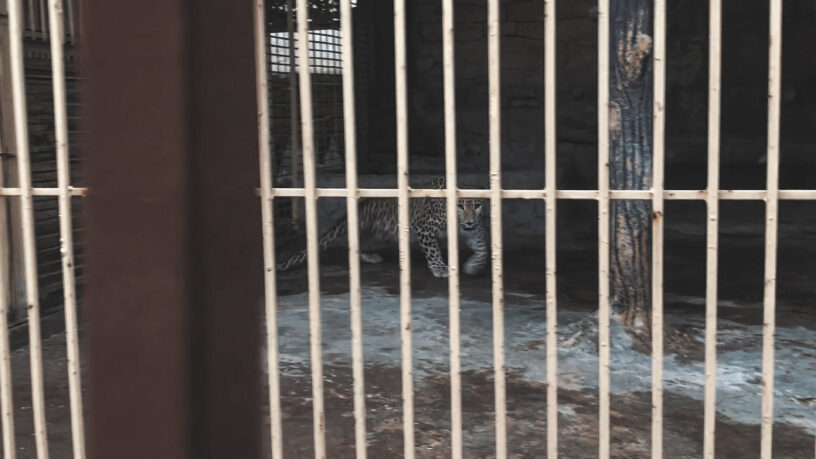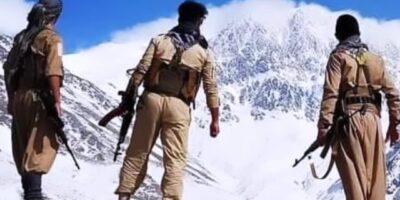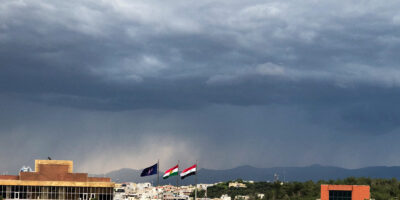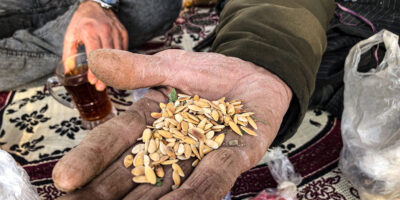DUHOK, Kurdistan Region – A wild Persian leopard has spent more than two years held captive in a small concrete cage in a zoo in Kurdistan Region’s northern city of Duhok. The leopard was injured in a trap set by a villager and cannot return to the wild, but no one has taken responsibility to provide it with a more suitable home.
“His future is in the cage,” said Dr Sulaiman Tameer, the vet who has been caring for the leopard since he was captured.
The Persian leopard, also known as the Anatolian or Caucasian leopard, is an endangered species. There are only an estimated 450 to 626 adults alive in the wild. They exist in fragments of what was once an extensive range stretching from Turkey’s Aegean coast to Kashmir. The Zagros mountains that straddle the Iran-Iraq border is an important pocket of territory for the leopard, but there too habitat loss and human activity threaten its existence.
Duhok’s leopard, a male, was caught in December 2021 in a trap set by a villager who had lost dozens of goats in the mountainous Batifa area of northern Duhok province. The trap caught hold of the leopard’s right hind leg and weighed the animal down for days, gnawing away at flesh, sinew, and bone.
Tameer was called in to help capture the animal. Using a tranquilizer gun, he was able to sedate it. After he examined the wound, Tameer estimated the leopard had been carrying the heavy trap cutting into his leg for about 10 days. He was weak from loss of blood.
Tameer performed surgery, amputating the lower half of the leg. A couple of weeks later, an international team of experts put together by the International Union for Conservation of Nature (IUCN) visited Duhok and performed a second surgery, cutting off the rest of the leg.
The animal is also missing some teeth, which likely were lost when it fell from a cliff during its capture. With these injuries he could not return to the wild, so was sent to live in the zoo. This was supposed to be temporary accommodation.
Duhok’s zoo is located in the centre of the city, surrounded by noisy streets and busy cafes. The leopard’s living quarters are a dark 3-by-4 metre room that opens into a larger 120 sq metre cage. Apart from the iron bars, everything the leopard touches is concrete. Lions and tigers bred in captivity are kept nearby. Dogs for sale yap from a cage across the walk. It is a constant bombardment of noises and smells.
This environment is a far cry from the life of solitude that leopards are used to, ranging freely in the mountains, under the wide open sky.
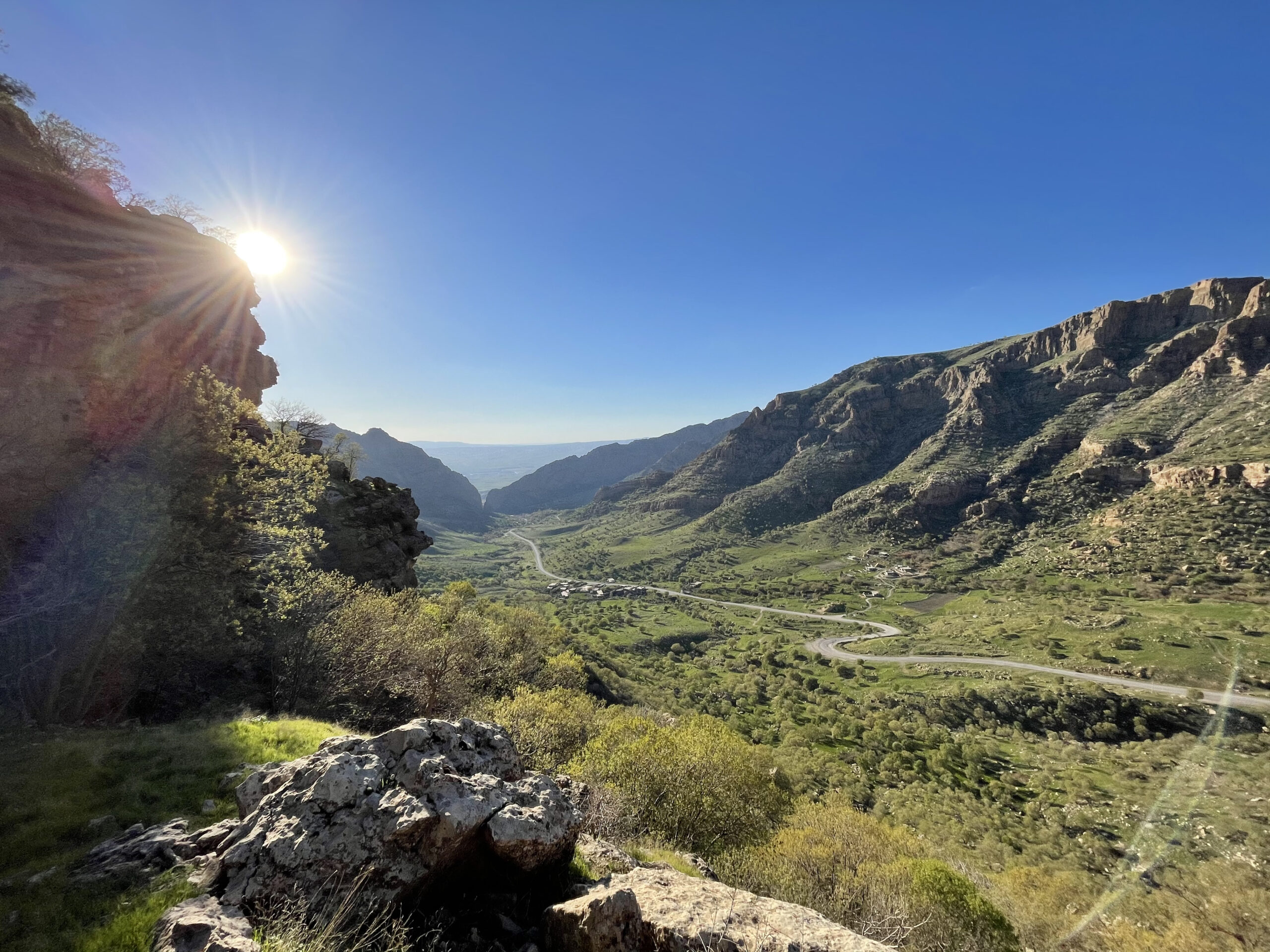
The leopard spends most of his time in the small room, coming out only to grab its food or when the zoo is closed and it is a little quieter with fewer humans around.
The Persian leopard was thought to be extinct in the Kurdistan Region until one was seen on a camera trap in 2011. Since then, at least nine of the animals have been spotted in the mountains, especially around the Mt. Bamo and Mt. Qaradagh areas in southern Sulaimani province. The sightings have attracted a lot of attention, some of it from hunters keen to bag a rare animal.
A few months before the Duhok leopard was caught in a trap, conservationists in Sulaimani found the carcass of a leopard that had been reportedly hunted in the mountains on the border with Iran.
The leopards are also threatened by conflict. Since 2017, Turkey has carried out repeated and intense military incursions into the Kurdistan Region with the goal of controlling the border and cutting the Kurdistan Workers’ Party (PKK) off from Turkey. The NGO Community Peacemaker Teams (CPT) has been tracking the conflict and documented the use of drones, fighter jets, and helicopters to bombard and seize the border areas, including Batifa, where the leopard was trapped.
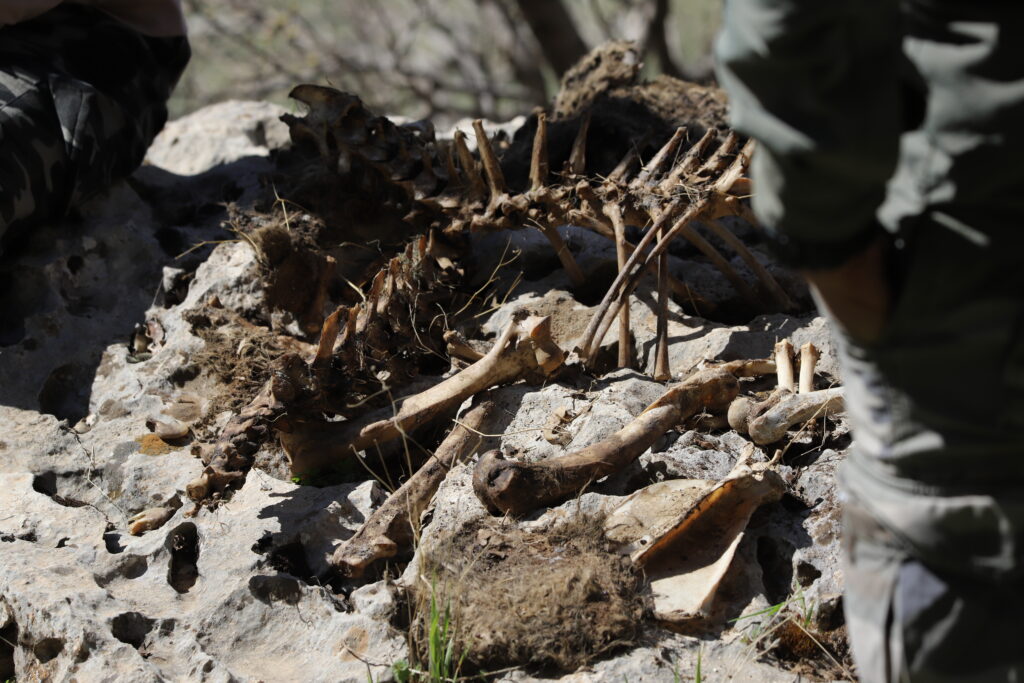
Iran also carries out frequent military incursions against Kurdish opposition groups along the frontier and Tehran has demanded Iraq boost border security, including the construction of a barrier to deter illegal crossings. This border is also littered with dangerous landmines, a legacy from the war between the neighbouring countries in the 1980s.
Wildfires, many of them caused by Turkish and Iranian bombardments, and rising plastic pollution are additional health hazards for many animals in these mountains.
The leopard in Duhok attracted a flurry of attention when it was first captured. Kurdistan Region Prime Minister Masrour Barzani personally asked the governor of Duhok to “take care of the health” of the animal. Baghdad sent a delegation to examine it and assess its needs. There was a plan to produce a special postage stamp featuring the leopard’s image. Tameer said he received offers of assistance from every quarter.
Initially, there was cautious optimism that it would be sent abroad where it could live in better conditions.
Hana Raza is a Persian leopard expert and founder of Leopards Beyond Borders. She led the failed efforts to send the animal to Lisbon Zoo, which has a conservation program and has worked on Persian leopard reproduction in Iran.
“Despite collaborative efforts with the Kurdish government, the office and team of the Prime Minister, and our Board of Environment, we encountered obstacles in relocating the leopard to the Lisbon Zoo, which is a member of EAZA with a leopard breeding program,” she said. EAZA is the European Association of Zoos and Aquaria.
She came up against opposition to letting the leopard out of the country and, ultimately, the Iraqi government refused to sign off on the CITES export permit – the document that would allow the transport of the animal across international borders in line with the Convention of International Trade in Endangered Species of Wild Fauna and Flora (CITES).
Tameer said the final decision was made by the Iraqi Ministry of the Environment, which refused to let him leave the country. The ministry did not respond to requests for comment for this article.
Opposition to the transfer also existed in the Kurdistan Region, according to Dilshad Mohammed, head of the Duhok branch of the Kurdistan Region’s environment board.
Officials in both Erbil and Baghdad “rejected the idea of taking him outside,” he said, explaining that there was a worry Iraq would lose ownership of the animal if it left the country.
Under the CITES agreement, though the leopard would be kept and bred in another country, it would still belong to Iraq. “We explained that this leopard was remaining the property of Iraq and any possible cubs that might have resulted from this breeding would also be ours,” Raza said.
“Regrettably, some individuals, for undisclosed reasons, opposed the transfer.”
With the leopard remaining in the country, the alternative was to find some accommodation for him here, better than the zoo.
Duhok authorities put together a proposal to build a small conservation area. They selected some government-owned land in Zawita, northeast of Duhok city, and planned to fence in an area about a hectare in size.
The area “was not big, but not small,” said Mohammed. It would get the leopard back into a natural environment and with some freedom to roam under the shade of the oak forests it knows.
Leopards live about 12 to 15 years in the wild and their lifespan can be extended by about five years in captivity. The animal is well-fed at the zoo and has recovered from the surgeries. It was about seven years old and weighed 63kg when it was captured. The vet Tameer estimates it has gained about 10kg in the past two years.
Tameer said the cost to create the conservation area would be about 300 million dinars ($228,000). The proposal and request for funding was sent to Baghdad, not to Erbil, because the Kurdistan Regional Government (KRG) is in a financial crisis and does not have the funds. But they got no response.
“They promised us… but nothing happened. This is more than one year [ago],” said Mohammed.
The leopard has dropped off the radar of both Baghdad and Erbil. Cowering in its dark room, it has been forgotten, cruelly abandoned in a concrete cage.
Tameer said it is past time for someone to do something.
“It’s an animal and they have souls… I say it’s better we do something for him,” he said.

